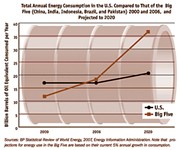After The Fall
Tank Farms: What Now?
By Robert Bryce, Fri., Feb. 23, 1996
The Gutierrez case was part of a spate of legal claims brought against oil companies who operated petroleum storage facilities in East Austin. Coastal States Crude Gathering Company, the last remaining defendant in the case, had agreed to settle out of court. And while Coastal's decision ends most of the litigation involving the tank farms, the battle over one of the largest tracts of open space in East Austin is just beginning.
The tank farm battle started more than five years ago, when nearby residents began complaining that they were suffering from a variety of health problems due to their proximity to the storage tanks. In 1992, a group of citizens filed suit against six oil companies -- Exxon, Chevron, Texaco, Mobil, Star Enterprises, and Coastal -- alleging that their property values and health had been hurt by the location and operation of the tank farms.
Last month, five of the companies agreed to settle the case. The terms of the settlements have not been disclosed. Robert Kizer, lead attorney for the plaintiffs, said the final details of the settlement had not been reached, but would be made available within the next month or so. Frank Oliver, an attorney who represents Coastal, refused to discuss the case.
While the 170 plaintiffs in the lawsuit will likely get several thousand dollars each, the neighborhoods around the tank farms remain in a quandary: What should be done with 52 acres of land that used to hold millions of gallons of refined petroleum products? Susanna Almanza of PODER (People Organized In Defense of Earth and her Resources), the group which led the fight to force the shutdown of the tank farms, says discussions about future uses of the land have already begun. She said that it would be ideal for parks, a health clinic, a grocery store, or a school. "We are doing a survey which we hope to complete pretty soon," she said.
Even if PODER comes up with a viable use for the land, a number of obstacles stand in the way. Foremost among them: the cleanup on the land has not been completed, and the land is still owned by the oil companies.
Buster Capuchino, the director of the Greater East Austin Youth League, which sponsors baseball, football, and basketball teams for Hispanic youngsters, says the neighborhoods around the tank farm need more ball fields. His group relies on ball fields on Town Lake near Fiesta Gardens. The Govalle Recreation Center provides some sports facilities for children who live around the tank farms, but Capuchino said Govalle isn't big enough. "The kids are there, but they don't have a program like ours," said Capuchino, who also wondered if the land would be safe. "The soil tests would have to be done and that could take a long time."
Neal Miller, a spokesman for Chevron, says no one has broached the subject of alternative uses of the tank farm property with his company. "Nobody has been to see us about it, no neighborhood groups or anyone else," Miller said. He added that Chevron, which owns about three acres of land, is willing to entertain ideas about future use of the property, which holds a warehouse and a small office building.
Miller said that Chevron has completed much of their cleanup, and that most of the tanks have been dismantled and removed. But while Chevron may be nearly finished with their cleanup, the other companies still have a long way to go. Under the supervision of the Texas Natural Resource Conservation Commission (TNRCC), the oil companies are pumping groundwater from beneath the tank farm and removing the hydrocarbons, which may include benzene, toluene, xylene, and other materials. The water is then put into the sanitary sewer so it is treated again at the city's wastewater treatment plant before being released into the Colorado River. The companies are also cleaning the contaminated soil through vapor extraction and a technique called air sparging, which pumps air into the soil.
Regardless of how the cleanup is done, some neighbors believe the land should be left idle. "I think they should just leave it like that," says John Vela, who rents a house on Alf Street that abuts the tank farm property. "If it's bad land, it's bad land."
Benny Guerra, Jr., whose mother, Beatrice Guerra, lives at 1103 Saucedo and was a plaintiff in the case against the oil companies, agrees that the land should be left vacant. "When it rains real hard, the water flows off of that land and sits here in the gutter for days," said Guerra, gesturing toward the fence that separates his mother's yard from the tank farm property. "And you can see the gasoline and chemicals in the water; it just sits right on top of the water. It's too dangerous for a park. They should just leave the gates closed and leave it alone."
Whatever the neighborhood decides to do with the land, it may be another decade before anything happens to it. In a December memo on the project, Pat Bobeck of the TNRCC said, "the cleanup will most likely continue for another five to 10 years."
It took nearly five years for the people who live around the tank farms to get their day in court. Perhaps it's not unreasonable for them to wait another five years before the land that used to hold the tank farms has a chance to become useful again. But the land is one of the largest undeveloped tracts in Central Austin. Like Mueller Airport, which is scheduled to close in 1998, the tank farm land, if developed, could be worth millions of dollars.
Kizer, the plaintiff's attorney, believes the land should be made into a park. Kizer said it "should be given back to the community. The lawsuits were about the community... Now that they've been settled, it needs to be given back to the public as a sign by the oil companies and the city that these people were harmed and now they have an area for their benefit."
Got something to say on the subject? Send a letter to the editor.








